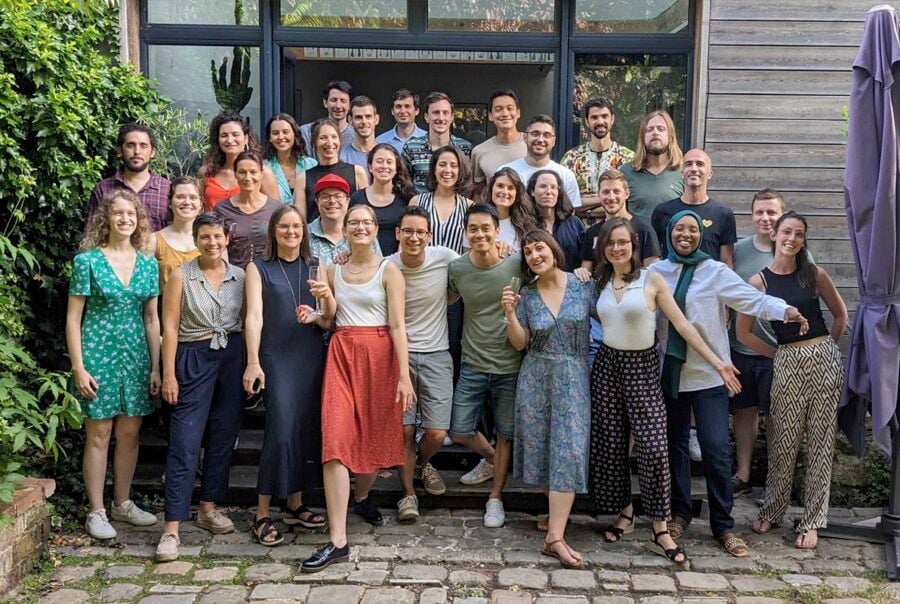AxonIQ: An event-driven adventure
In 2014, Jeroen Speekenbrink and Allard Buijze were working at Trifork, an IT consultancy. A strange thing was happening: Axon Framework, an open source framework built by Allard back in 2009 as a side project, benefitted from exponential growth in downloads. After giving it a thought, they finally decided to spin-off and create their own company in 2017, with the support of Trifork and an initial investment from Volta Ventures.
Trifork (formerly JTeam) wasn’t just any consultancy. Though you’ve probably never heard of it, you’ve heard of Elasticsearch, a company which they spun-off and with whom Jeroen and Allard shared offices for a few years. Elasticsearch demonstrated that open source software can be scaled to become a large, successful tech company.
AxonIQ offers an end-to-end development and infrastructure platform for the easy implementation and evolution of Event-driven architectures based on Domain Driven Design (DDD), Command-Query-Responsibility-Segregation (CQRS) and Event Sourcing.
What are those, why the interest, and why now?
To the neophyte these terms can be quite difficult to grasp. They are nonetheless at the core of many challenges encountered by companies today.
Start with customer expectations. Both in front-end and back-end, applications need to be snappy and sharp. For this, organizations need a real backbone. One of the ways to offer such performance is to transform monolith-built applications to event-driven microservices. Alongside performance, it allows for more flexible and scalable architectures that align better with business objectives. Some companies, like Uber or AirBnb, are lucky: they are microservices-native. Others, not so lucky, have had to completely revamp their architecture. Visionary early-adopters of microservices include Amazon, who took ten years to transition and just completed the process, and Netflix, who started in 2008 and took eight years.
For others, the journey has barely begun. Most large corporates are looking at their monolith from all angles, wondering where to begin. Others have spent millions on consultants only to find themselves stuck in endless complex problems. Most large corporates still have a decade of work in front of them to finish migrating their systems. All of them, however, are interested. Micro-services architecture, and even more event- driven architectures are closer to business reality: things that happen should be recorded, rather than things that just are. It is nothing less than the opportunity to align IT architecture logic with business logic, and to make it easily adaptable to fast-evolving business reality.
Axon Framework is an open-source framework initially targeted towards Java developers who want to build scalable applications within an event-driven microservices or structured monolith architecture. Such change isn’t obvious: it requires some thought, and, for most developers, to change their mindset. Domain-driven design and CQRS are principles that offer elegant ways to ensure robust and scalable systems by clearly defining boundaries and splitting roles in the architecture but remain complex as a do-it-yourself project. Axon Framework makes them easier to deploy.
Another key driver of change is the amount of data we create, every day, as consumers.
Ten years ago, data ingested by the biggest application in the world corresponds to what a regional bank would create today. Observers love to comment on big data and what it means: very few people know about the “plumbing” it entails.
Event Sourcing is one of such plumbing options. It allows organizations to store the entire history of their systems in databases called Event Stores. Unfortunately, it comes with well-known scalability issues as the amount of data stored is ever-growing, something that traditional databases are not designed to handle.
In 2017, Jeroen and Allard asked users of Axon Framework what they were missing. “Message routing and storage”, they responded. Thus, Axon Server, a zero-configuration message router and event store, was born. One of the company’s unique selling points is that their Event Store can sustain performances that are in an entirely different league compared to RDBMS and no-SQL databases. It means that their solution can handle exceptionally high volumes of data without loss of performance. An Event Store also ensures the data is immutable: as Florentine merchants discovered with double-entry bookkeeping, not deleting entries but correcting them ensures traceability. For industries where auditability matters, that is a key competitive advantage.
At Atlantic Vantage Point, we have done a lot of work on the transition from IT services to IT software; and when we met AxonIQ there was instant chemistry. Not only are Allard and Jeroen brilliant developers with exceptional communication capabilities, they have also built something unique. We think it is a key advantage for open-source companies to own and maintain the open source version of the software, in addition to offering managed services on top of it. AxonIQ’s founders created Axon Framework and Axon Server, like Kafka creators founded Confluent.
Thanks to advocacy by the likes of Greg Young, and the increasing adoption of microservices, interest in AxonIQ’s products is rapidly growing. More communication is needed, both on what CQRS and Event Sourcing can bring to organizations, and on how AxonIQ simplifies the transition to event-driven microservices. Leaders need to start documenting themselves on what is happening in their systems. For regulated, complex or data-generative organizations, an immutable, high-performance ledger of everything that happened in their systems is a business and regulatory asset. As we have seen from AxonIQ’s customer base, use cases range from logistics, to banking, to government, and beyond.
Timing is very important for start-ups and we believe it is the right time for AxonIQ. They made no effort to promote Axon Framework, and yet, the community recognised them as a standard that goes very well in hand with broader industry themes. That is because AxonIQ solves hard and true problems. In addition, reliability is key for core-systems software and AxonIQ has an active following that helps them improve and innovate. That is exactly the kind of story that open source enables – and of these stories we will see more and more.
We are proud to be working alongside AxonIQ and Volta Ventures on this journey, and we are looking forward to seeing what we can achieve together.
For further reading, please visit https://axoniq.io/ where a technical blog will help you on your event-driven adventure.






